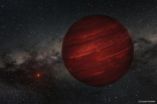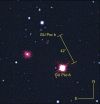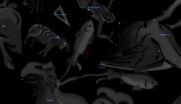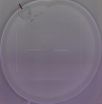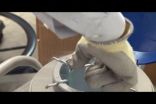(Press-News.org) This news release is available in French.
A gas giant has been added to the short list of exoplanets discovered through direct imaging. It is located around GU Psc, a star three times less massive than the Sun and located in the constellation Pisces. The international research team, led by Marie-Ève Naud, a PhD student in the Department of Physics at the Université de Montréal, was able to find this planet by combining observations from the the Gemini Observatories, the Observatoire Mont-Mégantic (OMM), the Canada-France-Hawaii Telescope (CFHT) and the W.M. Keck Observatory.
A distant planet that can be studied in detail
GU Psc b is around 2,000 times the Earth-Sun distance from its star, a record among exoplanets. Given this distance, it takes approximately 80,000 Earth years for GU Psc b to make a complete orbit around its star! The researchers also took advantage of the large distance between the planet and its star to obtain images. By comparing images obtained in different wavelengths (colours) from the OMM and CFHT, they were able to correctly detect the planet.
"Planets are much brighter when viewed in infrared rather than visible light, because their surface temperature is lower compared to other stars," says Naud. "This allowed us to indentify GU Psc b."
Knowing where to look
The researchers were looking around GU Psc because the star had just been identified as a member of the young star group AB Doradus. Young stars (only 100 million years old) are prime targets for planetary detection through imaging because the planets around them are still cooling and are therefore brighter. This does not mean that planets similar to GU Psc b exist in large numbers, as noted by by Étiene Artigau, co-supervisor of Naud's thesis and astrophysicist at the Université de Montréal. "We observed more than 90 stars and found only one planet, so this is truly an astronomical oddity!"
Observing a planet does not directly allow determining its mass. Instead, researchers use theoretical models of planetary evolution to determine its characteristics. The light spectrum of GU Psc b obtained from the Gemini North Observatory in Hawaii was compared to such models to show that it has a temperature of around 800°C. Knowing the age of GU Psc due to its location in AB Doradus, the team was able to determine its mass, which is 9-13 times that of Jupiter.
In the coming years, the astrophysicists hope to detect planets that are similar to GU Psc but much closer to their stars, thanks, among other things, to new instruments such as the GPI (Gemini Planet Imager) recently installed on Gemini South in Chile. The proximity of these planets to their stars will make them much more difficult to observe. GU Psc b is therefore a model for better understanding these objects.
"GU Psc b is a true gift of nature. The large distance that separates it from its star allows it to be studied in depth with a variety of instruments, which will provide a better understanding of giant exoplanets in general," says René Doyon, co-supervisor of Naud's thesis and OMM Director.
The team has started a project to observe several hundred stars and detect planets lighter than GU Psc b with similar orbits. The discovery of GU Psc, a rare object indeed, raises awareness of the significant distance that can exist between planets and their stars, opening the possibility of searching for planets with powerful infrared cameras using much smaller telescopes such at the one at the Observatoire du Mont-Mégantic. The researchers also hope to learn more about the abundance of such objects in the next few years, in particular, using GPI instruments, the CFHT's SPIRou, and the James Webb Space Telescope's FGS/NIRISS.
INFORMATION: END
Odd planet, so far from its star...
Discovery and photography of a new planet 155 light years from our solar system
2014-05-13
ELSE PRESS RELEASES FROM THIS DATE:
Autophagic activation with Nimotuzumab enhances chemo-radiosensitivity
2014-05-13
A study which will be published in the May 2014 issue of Experimental Biology and Medicine was aimed at determining whether an EGFR-targeted therapy combined with chemo-radiotherapy can improve local tumor control effectively, compared to cytotoxic agents or irradiation alone. Dr. Haizhu Song and co-workers from Jinling Hospital and the Medical School of Nanjing University in China demonstrated that nimotuzumab could enhance chemo-radiosensitivity by promoting autophagic cell death in esophageal squamous carcinoma (ESCC) cells.
Nimotuzumab is a humanized anti-EGFR monoclonal ...
Distance influences accuracy of eyewitness IDs
2014-05-13
Eyewitness accuracy declines steadily and quite measuredly as the distance increases. Additionally, a good deal of guess work or so-called "false alarms" also comes into play as the distance increases. These findings have implications for the trustworthiness of eyewitness accounts that are used to solve criminal cases. Research led by James Lampinen of the University of Arkansas in the US and published in Springer's journal Psychonomic Bulletin & Review sheds light on the matter.
Eyewitness identification plays a crucial role in approximately 80,000 criminal cases per ...
Follow that fish!
2014-05-13
New findings published by researchers at the New York University Polytechnic School of Engineering are helping to unravel the complex interplay between alcohol and social behavior and may lead to new therapies for mitigating the negative impacts of alcohol use and abuse. Their experiments, published in the current issue of Alcohol: Clinical and Experimental Research, center not on patrons at a local happy hour, but on far simpler creatures: zebrafish.
A team led by Maurizio Porfiri, associate professor of mechanical and aerospace engineering and director of the school's ...
3-D 'map' of enzyme completed by MU scientists could lead to more effective drugs
2014-05-13
COLUMBIA, Mo. – The human body is full of proteins called enzymes that help nearly every function in the body. Scientists have been studying enzymes for decades in order to learn how they work and how to create better drugs and medical treatments for many ailments. Now, University of Missouri researchers have completed a 3-D map of an enzyme called Proline utilization A (PutA). PutA facilitates metabolism by adding oxygen to molecules. John Tanner, a professor in the MU Department of Biochemistry, says mapping this enzyme will give researchers a better understanding of ...
Achieving patient-centered care across the spectrum
2014-05-13
HANOVER, NH – Providing patient-centered care consistently in clinical practice requires practitioners who are able to recognize that different clinical situations require different approaches and are skilled enough to adapt.
Across the range of health-care problems, patient-centered care has been found to be associated with improved patient outcomes, including improved self-management, patient satisfaction, and medication adherence, and some studies have found evidence for improved clinical outcomes. Data from surveys and research indicate that clinicians often do not ...
Obsessive-compulsive disorder questionnaire may give clues to other mental health problems
2014-05-13
A shortened version of a questionnaire used by psychologists to assess risk factors for obsessive-compulsive disorder also may help determine the risk of depression and anxiety, according to a Baylor University study.
The revision may be a good fit for assessing the risk of mental health issues stemming from certain beliefs — such as seeing threats as greater than they are and feeling that things are not right unless they are perfect. Such dysfunctional beliefs are central to obsessive-compulsive disorder (OCD), said researcher Thomas Fergus, Ph.D., assistant professor ...
Women's empowerment and Olympic success
2014-05-13
ALLENDALE, Mich. — New research shows that nations with greater women's empowerment win more medals and send more athletes to the Summer Olympics. The effect of women's empowerment held for both men and women, although it was stronger for female athletes, according to a study by Grand Valley State University researchers. The findings were published in April 2014 in the Journal of Sports Economics.
The research, led by Aaron Lowen, associate professor of economics at Grand Valley State, provides evidence for the popular but previously untested hypothesis that women's empowerment ...
Fossil palm beetles 'hind-cast' 50-million-year-old winters
2014-05-13
Fifty-million-year-old fossil beetles that fed only on palm seeds are giving Simon Fraser University biologists Bruce Archibald and Rolf Mathewes new information about ancient climates.
According to their research, published online this week in The Proceedings of the National Academy of Sciences, these fossil beetles indicate that during a period of global warming in the geological past, there were mild, frost-free winters extended even in the uplands of ancient western North America.
Working with co-authors Geoffrey Morse of the University of San Diego, California, ...
Letting it go: Take responsibility, make amends and forgive yourself
2014-05-13
Forgiving ourselves for hurting another is easier if we first make amends — thus giving our inner selves a "moral OK," according to Baylor University psychology researchers.
The research, published in The Journal of Positive Psychology, is significant because previous studies show that the inability to self-forgive can be a factor in depression, anxiety and a weakened immune system, researchers said.
"One of the barriers people face in forgiving themselves appears to be that people feel morally obligated to hang on to those feelings. They feel they deserve to feel bad. ...
UT Dallas team creates flexible electronics that change shape inside body
2014-05-13
Researchers from The University of Texas at Dallas and the University of Tokyo have created electronic devices that become soft when implanted inside the body and can deploy to grip 3-D objects, such as large tissues, nerves and blood vessels.
These biologically adaptive, flexible transistors might one day help doctors learn more about what is happening inside the body, and stimulate the body for treatments.
The research, available online and in an upcoming print issue of Advanced Materials, is one of the first demonstrations of transistors that can change shape and ...
LAST 30 PRESS RELEASES:
American Meteorological Society announces Rick Spinrad as 2026 President-Elect
Biomass-based carbon capture spotlighted in newly released global climate webinar recording
Illuminating invisible nano pollutants: advanced bioimaging tracks the full journey of emerging nanoscale contaminants in living systems
How does age affect recovery from spinal cord injury?
Novel AI tool offers prognosis for patients with head and neck cancer
Fathers’ microplastic exposure tied to their children’s metabolic problems
Research validates laboratory model for studying high-grade serous ovarian cancer
SIR 2026 delivers transformative breakthroughs in minimally invasive medicine to improve patient care
Stem Cell Reports most downloaded papers of 2025 highlight the breadth and impact of stem cell research
Oxford-led study estimates NHS spends around 3% of its primary and secondary care budget on the health impacts of heat and cold in England
A researcher’s long quest leads to a smart composite breakthrough
Urban wild bees act as “microbial sensors” of city health.
New study finds where you live affects recovery after a hip fracture
Forecasting the impact of fully automated vehicle adoption on US road traffic injuries
Alcohol-related hospitalizations from 2016 to 2022
Semaglutide and hospitalizations in patients with obesity and established cardiovascular disease
Researchers ‘listen in’ to embryo-mother interactions during implantation using a culture system replicating the womb lining
How changing your diet could help save the world
How to make AI truly scalable and reliable for real-time traffic assignment?
Beyond fragmented markets: A new framework for efficient and stable ride-pooling
Can shape priors make road perception more reliable for autonomous driving?
AI tracks nearly 100 years of aging research, revealing key trends and gaps
Innovative techniques enable Italy’s first imaging of individual trapped atoms
KIER successfully develops Korea-made “calibration thermoelectric module” for measuring thermoelectric device performance
Diversifying US Midwest farming for stability and resilience
Emphasizing immigrants’ deservingness shifts attitudes
Japanese eels, climate change, and river temperature
Pusan National University researchers discover faster, smarter heat treatment for lightweight magnesium metals
China’s 2024 Gastroenterology Report: marked progress in endoscopy quality and disease management
Pusan National University researchers uncover scalable method for ultrahigh-resolution quantum dot displays
[Press-News.org] Odd planet, so far from its star...Discovery and photography of a new planet 155 light years from our solar system
